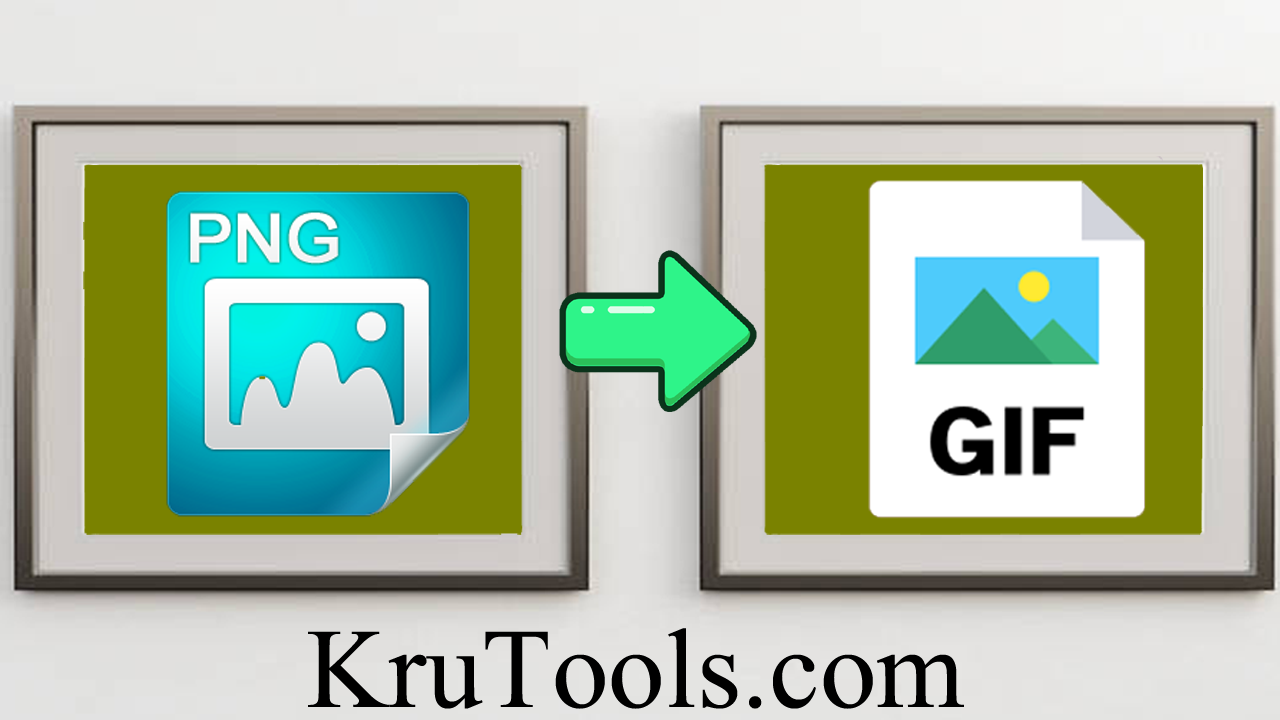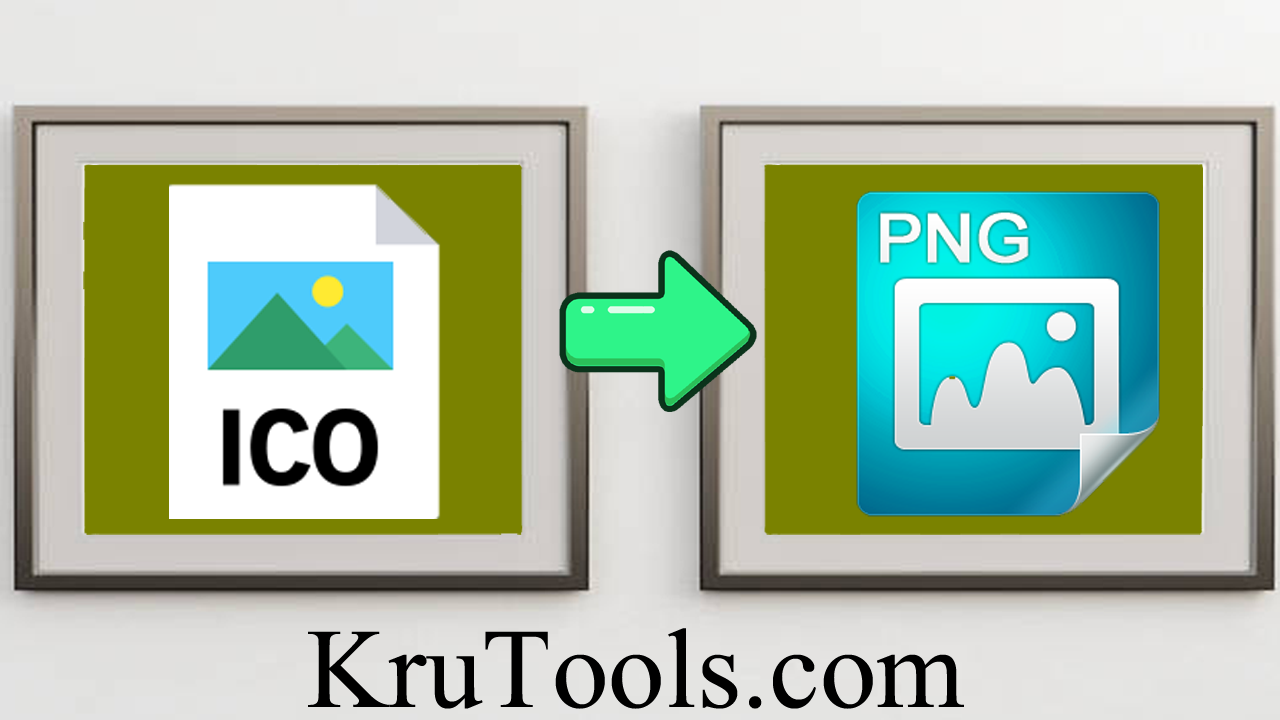
Maximize Your Blog's Earning Potential: Exploring Various Methods to Monetize Your Blog

Introduction to monetizing your blog
Blogging has evolved from a hobby into a lucrative profession for many individuals. As a blogger, you pour your heart and soul into creating valuable content for your audience. However, the question remains: how can you turn your passion into a sustainable income stream? Monetizing your blog is the answer, and in this comprehensive guide, I'll explore various methods to help you maximize your earning potential.

In today's digital age, there are numerous opportunities to monetize your blog. From display advertising and affiliate marketing to sponsored content and digital product sales, the possibilities are endless. By understanding and implementing these strategies, you can transform your blog into a profitable venture while maintaining the integrity of your content and the trust of your audience.
As we delve into the world of blog monetization, I'll share insights, tips, and best practices to help you navigate this exciting journey. Whether you're a seasoned blogger or just starting out, this guide will equip you with the knowledge and tools to unlock your blog's full earning potential.
Understanding different methods to monetize your blog
Before we dive into the specific monetization methods, it's essential to understand the various options available to you as a blogger. Each method has its own unique advantages, challenges, and suitability for different types of blogs and audiences.
Display advertising is one of the most common and straightforward ways to monetize your blog. By partnering with advertising networks or directly selling ad space, you can generate revenue based on impressions, clicks, or conversions.
Affiliate marketing involves promoting products or services from other companies and earning a commission for every sale you generate through your unique affiliate links. This method allows you to leverage your audience's trust and provide value-added recommendations.
Sponsored content is another popular monetization strategy, where brands collaborate with you to create sponsored posts, reviews, or other forms of content. This approach can be highly lucrative, but it's crucial to maintain transparency and disclose sponsored content to your readers.
Selling digital products, such as ebooks, online courses, or templates, is an excellent way to monetize your expertise and provide value to your audience while generating passive income.
Membership sites offer exclusive content, resources, or communities to subscribers who pay a recurring fee. This method fosters a loyal following and can provide a steady stream of income.
Sponsored reviews involve reviewing products or services and receiving compensation from the companies behind them. While this method can be lucrative, it's essential to maintain objectivity and disclose any potential conflicts of interest.
Donations and crowdfunding present alternative revenue streams for bloggers who prefer not to engage in traditional monetization methods or have a specific project or cause to support.
Finally, combining multiple monetization methods can maximize your earning potential and provide a diversified income stream, mitigating the risks associated with relying on a single revenue source.
Display advertising: Maximizing ad revenue on your blog
Display advertising is one of the most common and widely adopted methods for monetizing blogs. By partnering with advertising networks or directly selling ad space on your blog, you can generate revenue based on various factors, such as impressions (views), clicks, or conversions.
There are several advertising networks to choose from, including Google AdSense, Mediavine, AdThrive, and many others. Each network has its own requirements, payout structures, and ad formats, so it's essential to research and select the one that best aligns with your blog's niche, traffic, and audience.
To maximize your ad revenue, consider the following strategies:
-
Optimize ad placements: Strategically place ads in high-visibility areas of your blog, such as the header, sidebar, or within the content itself. Experiment with different ad sizes and formats to find the optimal balance between user experience and revenue generation.
-
Leverage ad targeting: Many advertising networks offer advanced targeting options that allow you to display relevant ads based on your audience's interests, location, or browsing behavior. Targeted ads tend to perform better and generate higher click-through rates, resulting in increased revenue.
-
Implement ad refreshes: Ad refreshes (also known as ad reloads) allow new ads to be displayed on your blog after a certain period, even if the user hasn't navigated away from the page. This technique can increase your ad impressions and revenue, but it's essential to strike a balance between ad refreshes and user experience.
-
Optimize content for ad performance: Create high-quality, engaging content that keeps visitors on your blog for longer periods, increasing the likelihood of ad impressions and clicks. Additionally, consider incorporating content formats that naturally lend themselves to ad placements, such as listicles or how-to guides.
-
Monitor and analyze ad performance: Regularly monitor your ad performance metrics, such as click-through rates (CTRs), revenue per thousand impressions (RPMs), and ad earnings. Use this data to identify top-performing ad units, placements, and content types, and adjust your strategy accordingly.
By implementing these strategies and continuously optimizing your ad setup, you can maximize your ad revenue and create a sustainable income stream from your blog.
Affiliate marketing: Leveraging product recommendations for income
Affiliate marketing is a powerful monetization strategy that allows you to earn commissions by promoting products or services from other companies. As a blogger, you can leverage your audience's trust and provide value-added recommendations, while earning a percentage of the sales generated through your unique affiliate links.
To succeed with affiliate marketing, it's essential to choose products or services that align with your blog's niche and resonate with your audience. Promoting irrelevant or low-quality products can damage your credibility and alienate your readers.
Here are some effective strategies for leveraging affiliate marketing on your blog:
-
Provide honest and transparent reviews: Share your genuine experiences and opinions about the products or services you're promoting. Honest reviews not only build trust with your audience but also help them make informed purchasing decisions.
-
Incorporate affiliate links naturally: Rather than overwhelming your readers with affiliate links, seamlessly integrate them into your content. For example, you can include links within product recommendations, resource lists, or how-to guides.
-
Create dedicated affiliate content: Develop in-depth product reviews, comparisons, or buying guides specifically focused on the products or services you're promoting. This type of content can be highly valuable to your audience and increase the likelihood of conversions.
-
Leverage affiliate marketplaces: Join affiliate marketplaces like Amazon Associates, ShareASale, or CJ Affiliate to access a vast range of products and services to promote. These platforms make it easy to find relevant affiliate programs and track your earnings.
-
Disclose affiliate relationships: Maintain transparency by clearly disclosing your affiliate relationships to your readers. This not only builds trust but also complies with legal requirements in many jurisdictions.
-
Diversify your affiliate partnerships: To mitigate risk and maximize earning potential, consider diversifying your affiliate partnerships across multiple companies and product categories within your niche.
By implementing these strategies and consistently providing value to your audience, you can leverage affiliate marketing as a lucrative income stream for your blog.
Sponsored content: Collaborating with brands for sponsored posts
Sponsored content is a monetization method that involves collaborating with brands or companies to create sponsored posts, reviews, or other forms of content on your blog. In exchange for this collaboration, you receive compensation, which can be in the form of a fixed fee, a commission on sales, or a combination of both.
Sponsored content can be an excellent way to generate income from your blog, but it's crucial to maintain transparency and disclose sponsored content to your readers. Failing to do so can damage your credibility and erode the trust you've built with your audience.
Here are some strategies for successfully implementing sponsored content on your blog:
-
Establish clear guidelines and policies: Develop a set of guidelines and policies that outline the types of sponsored content you're willing to accept, your disclosure practices, and your editorial standards. This will help you maintain consistency and ensure that sponsored content aligns with your blog's values and audience expectations.
-
Collaborate with relevant brands: Seek out sponsorship opportunities with brands or companies that are relevant to your blog's niche and audience. This will not only make the sponsored content more valuable to your readers but also increase the likelihood of successful collaborations.
-
Maintain editorial control: While working with sponsors, ensure that you maintain editorial control over the content you create. This will allow you to maintain the authenticity and integrity of your blog while still meeting the sponsor's objectives.
-
Disclose sponsored content transparently: Be upfront and transparent about sponsored content by clearly disclosing the nature of your relationship with the sponsor. This can be done through prominent disclosures at the beginning or end of the sponsored content, or through the use of specific labels or hashtags.
-
Provide value to your audience: Regardless of the sponsored nature of the content, strive to provide genuine value to your readers. This could involve sharing valuable insights, offering unique perspectives, or providing practical tips and advice related to the sponsored product or service.
-
Monitor and adjust your sponsored content strategy: Regularly evaluate the performance of your sponsored content, including engagement metrics, audience feedback, and overall revenue generated. Use this data to refine your strategy, identify areas for improvement, and ensure that sponsored content remains a valuable and sustainable income stream for your blog.
By implementing these strategies and maintaining transparency, you can successfully collaborate with brands and leverage sponsored content as a lucrative monetization method for your blog.
Selling digital products: Creating and selling ebooks, courses, or templates
Selling digital products, such as ebooks, online courses, or templates, is an excellent way to monetize your blog and leverage your expertise. This method allows you to create valuable resources for your audience while generating passive income and diversifying your revenue streams.
Creating and selling digital products can be a highly rewarding endeavor, but it requires careful planning, execution, and promotion. Here are some strategies to consider:
-
Identify your audience's pain points and needs: Conduct market research to understand your audience's challenges, interests, and knowledge gaps. This will help you create digital products that address their specific needs and provide genuine value.
-
Leverage your expertise and unique perspective: Draw upon your knowledge, experiences, and unique perspectives to create high-quality digital products that stand out in the market. Share your insights, strategies, and actionable advice in a comprehensive and engaging manner.
-
Offer different product formats: Consider offering your digital products in various formats, such as ebooks, video courses, audio programs, or downloadable templates. This will cater to different learning preferences and increase the potential reach of your products.
-
Implement a robust sales and marketing strategy: Develop a comprehensive sales and marketing strategy to promote your digital products effectively. This may include email marketing campaigns, social media promotions, affiliate partnerships, or targeted advertising.
-
Provide excellent customer support: Ensure that you have a reliable customer support system in place to address any questions, concerns, or technical issues your customers may encounter. Prompt and effective support can enhance customer satisfaction and build trust in your brand.
-
Continuously update and expand your product offerings: Regularly update your digital products with new content, features, or formats to keep them relevant and valuable. Additionally, consider expanding your product line by creating complementary offerings or exploring new niches within your area of expertise.
By implementing these strategies and continuously refining your approach, you can successfully monetize your blog through the creation and sale of digital products, leveraging your expertise and providing valuable resources to your audience.
Membership sites: Offering exclusive content to subscribers
Membership sites are a powerful monetization strategy that involves offering exclusive content, resources, or communities to subscribers who pay a recurring fee. This method allows you to build a loyal following and generate a steady stream of income from your blog.
Creating a successful membership site requires careful planning, valuable content creation, and effective promotion and retention strategies. Here are some key considerations:
-
Define your membership offering: Determine the type of exclusive content, resources, or community you will offer to your members. This could include premium content, educational materials, private forums, live Q&A sessions, or exclusive discounts and deals.
-
Set pricing and membership tiers: Decide on your pricing structure and consider offering different membership tiers with varying levels of access and benefits. This can cater to different audience segments and budgets, while maximizing your earning potential.
-
Create a compelling sales funnel: Develop a sales funnel that effectively promotes your membership offering, highlighting the value proposition and benefits of joining. This may include lead magnets, free trials, or sales pages that clearly communicate the advantages of becoming a member.
-
Provide consistent value and engagement: Continuously create high-quality, exclusive content and resources for your members. Additionally, foster a sense of community and engagement by facilitating discussions, hosting live events, or offering personalized support and feedback.
-
Implement effective retention strategies: Develop strategies to retain your existing members and reduce churn. This may include offering incentives for long-term memberships, providing regular updates and new content, or implementing loyalty programs and rewards.
-
Leverage automated systems and tools: Utilize membership management platforms, payment gateways, and other tools to streamline the sign-up process, manage subscriptions, and deliver content efficiently to your members.
By creating a valuable and engaging membership experience, you can build a loyal subscriber base and generate a recurring revenue stream for your blog, while fostering a strong sense of community around your content and expertise.
Sponsored reviews: Earning income through product or service reviews
Sponsored reviews are a monetization method that involves reviewing products or services and receiving compensation from the companies behind them. This approach can be lucrative, but it's essential to maintain objectivity and disclose any potential conflicts of interest to your readers.
When implementing sponsored reviews on your blog, consider the following strategies:
-
Establish clear guidelines and policies: Develop a set of guidelines and policies that outline the types of products or services you're willing to review, your disclosure practices, and your review standards. This will help you maintain consistency and ensure that sponsored reviews align with your blog's values and audience expectations.
-
Maintain objectivity and transparency: Strive to provide honest and unbiased reviews, even when compensated by the company. Clearly disclose the sponsored nature of the review and any potential conflicts of interest to your readers. This will help maintain trust and credibility.
-
Focus on relevant and high-quality products or services: Seek out sponsored review opportunities for products or services that are relevant to your blog's niche and audience. Reviewing irrelevant or low-quality offerings can damage your credibility and alienate your readers.
-
Provide comprehensive and valuable reviews: Offer in-depth, detailed reviews that highlight the product's or service's features, benefits, and potential drawbacks. Include multimedia elements such as images, videos, or comparisons to enhance the review's value and engagement.
-
Leverage your expertise and unique perspective: Draw upon your knowledge and experiences to provide insightful analysis, practical tips, and unique perspectives in your sponsored reviews. This will differentiate your reviews from others and provide additional value to your audience.
-
Monitor and adjust your sponsored review strategy: Regularly evaluate the performance of your sponsored reviews, including engagement metrics, audience feedback, and overall revenue generated. Use this data to refine your strategy, identify areas for improvement, and ensure that sponsored reviews remain a valuable and sustainable income stream for your blog.
By implementing these strategies and maintaining transparency and objectivity, you can successfully leverage sponsored reviews as a lucrative monetization method for your blog, while maintaining the trust and loyalty of your audience.
Donations and crowdfunding: Exploring alternative revenue streams
While many bloggers focus on traditional monetization methods, donations and crowdfunding present alternative revenue streams that can be particularly valuable for bloggers who prefer not to engage in sponsored content or advertising, or for those with a specific project or cause to support.
Accepting donations allows your readers to directly support your work and contribute to the ongoing creation of valuable content. This method can foster a strong sense of community and appreciation among your audience, as they become active participants in sustaining your blog.
Crowdfunding, on the other hand, involves raising funds from a large number of people, typically through online platforms like Kickstarter or Indiegogo, to support a specific project or initiative. This approach can be particularly effective for bloggers looking to fund the development of a new product, such as an ebook, course, or event.
Here are some strategies to consider when exploring donations and crowdfunding as revenue streams for your blog:
-
Clearly communicate your purpose and goals: Whether you're accepting donations or launching a crowdfunding campaign, clearly articulate your purpose and goals to your audience. Explain why you're seeking support and how their contributions will be used to create value for them.
-
Offer incentives or rewards: For crowdfunding campaigns, consider offering incentives or rewards at different contribution levels. These could include exclusive content, merchandise, or early access to the project you're funding.
-
Leverage your existing audience and network: Your existing blog audience and network can be your strongest supporters for donations or crowdfunding campaigns. Engage with them, share your story, and encourage them to spread the word and contribute.
-
Promote your campaign effectively: Develop a comprehensive promotion strategy that leverages social media, email marketing, influencer outreach, and other channels to reach a wider audience and increase the visibility of your donation or crowdfunding campaign.
-
Foster a sense of community and transparency: Keep your supporters informed and engaged throughout the process by providing regular updates, behind-the-scenes insights, and transparency about how their contributions are being used.
-
Explore alternative platforms and methods: While popular crowdfunding platforms like Kickstarter and Indiegogo are well-known, consider exploring alternative platforms or methods that may better align with your blog's niche or audience.
By implementing these strategies and leveraging the power of your audience and network, donations and crowdfunding can become valuable alternative revenue streams for your blog, allowing you to fund specific projects, initiatives, or ongoing content creation while fostering a strong sense of community and support.
Combining multiple monetization methods for maximum earning potential
While each monetization method offers its own advantages and challenges, combining multiple strategies can maximize your earning potential and provide a diversified income stream, mitigating the risks associated with relying on a single revenue source.
By leveraging a combination of methods, such as display advertising, affiliate marketing, sponsored content, digital product sales, membership sites, sponsored reviews, and donations or crowdfunding, you can create a robust and sustainable monetization strategy for your blog.
However, it's essential to strike a balance and ensure that your monetization efforts do not compromise the quality and integrity of your content or detract from the user experience. Here are some tips for successfully combining multiple monetization methods:
-
Prioritize and focus on the most suitable methods: Evaluate your blog's niche, audience, and goals to determine the most suitable monetization methods to prioritize. Focus your efforts on the strategies that align best with your blog's unique strengths and audience preferences.
-
Develop a cohesive monetization strategy: Create a comprehensive plan that outlines how each monetization method will be implemented, the goals and targets for each stream, and how they will complement each other without overwhelming your audience.
-
Maintain transparency and disclose monetization methods: Be upfront with your readers about the various monetization methods you're employing on your blog. Clearly disclose sponsored content, affiliate links, and other monetization efforts to maintain trust and credibility.
-
Monitor and optimize each revenue stream: Regularly track and analyze the performance of each monetization method, including metrics such as ad revenue, affiliate sales, product sales, and membership subscriptions. Use this data to optimize and refine your strategies for maximum effectiveness.
-
Provide value and maintain a positive user experience: Regardless of the monetization methods you employ, always prioritize providing value to your audience and maintaining a positive user experience. Ensure that your monetization efforts do not detract from the quality of your content or create an overly commercialized environment.
-
Continuously explore and adapt: Stay up-to-date with emerging monetization trends and opportunities in the blogging industry. Be open to exploring new methods and adapting your strategy as your blog and audience evolve over time.
By combining multiple monetization methods in a strategic and well-executed manner, you can unlock your blog's full earning potential, create a diversified income stream, and build a sustainable and profitable blogging business.
Tips for successful blog monetization
Monetizing your blog is a journey that requires careful planning, execution, and continuous optimization. To increase your chances of success, consider the following tips:
-
Understand your audience: Conduct thorough audience research to gain insights into their interests, pain points, and preferences. This knowledge will help you tailor your monetization strategies and content to better resonate with your target audience.
-
Focus on providing value: Regardless of the monetization methods you choose, always prioritize creating high-quality, valuable content for your readers. Monetization should be a byproduct of your efforts to serve your audience, not the primary goal.
-
Experiment and test different strategies: Don't be afraid to experiment with various monetization methods and strategies. Test different ad placements, affiliate products, sponsored content opportunities, and pricing models to find the optimal approach for your blog.
-
Build an email list: Cultivate an engaged email subscriber base. An email list allows you to directly communicate with your audience, promote your offerings, and build a loyal following that can contribute to your monetization efforts.
-
Leverage social media and influencer marketing: Utilize social media platforms and influencer marketing to expand your reach, engage with your audience, and promote your monetization efforts. Collaborate with influencers or thought leaders in your niche to tap into new audiences and increase visibility.
-
Continuously learn and adapt: The landscape of blog monetization is constantly evolving. Stay up-to-date with industry trends, best practices, and emerging technologies by attending conferences, participating in online communities, and continuously learning and adapting your strategies.
-
Diversify your income streams: As mentioned earlier, diversifying your monetization methods can mitigate risks and provide a more stable and sustainable income. Explore and implement multiple revenue streams to create a well-rounded monetization strategy.
-
Be patient and persistent: Building a successful, monetized blog takes time, effort, and persistence. Celebrate small wins along the way, but remain focused on your long-term goals and consistently work towards improving and refining your monetization strategies.
By following these tips and continuously optimizing your approach, you can increase your chances of achieving sustainable success in monetizing your blog and turning your passion into a profitable venture.
Common mistakes to avoid when monetizing your blog
While monetizing your blog can be a rewarding endeavor, it's essential to be aware of common mistakes that can hinder your success. Avoiding these pitfalls will help you maximize your earning potential and maintain a positive relationship with your audience.
-
Prioritizing monetization over content quality: One of the most common mistakes is sacrificing the quality of your content in favor of aggressive monetization tactics. This can lead to a poor user experience, alienate your audience, and ultimately undermine your blog's credibility and success.
-
Overwhelming your audience with ads and promotions: While advertising and affiliate marketing can be lucrative, overdoing it can create a cluttered and intrusive experience for your readers. Strike a balance between monetization efforts and maintaining a clean, user-friendly layout.
-
Promoting irrelevant or low-quality products: Recommending products or services that are irrelevant or of poor quality can damage your credibility and erode the trust you've built with your audience. Always prioritize promoting high-quality, relevant offerings that provide genuine value.
-
Lacking transparency and disclosure: Failing to disclose sponsored content, affiliate relationships, or other monetization efforts can be perceived as deceptive and lead to a loss of trust from your readers. Be transparent and upfront about your monetization strategies.
-
Neglecting audience engagement and community building: While monetization is important, neglecting audience engagement and community building can lead to a disconnected and disengaged audience. Make efforts to foster a strong, loyal community by encouraging interaction, responding to comments, and providing value beyond monetization.
-
Ignoring legal and ethical considerations: Ensure that you comply with relevant laws and regulations regarding advertising, sponsored content, and data privacy. Additionally, maintain ethical standards and avoid engaging in deceptive or misleading practices.
-
Failing to diversify and adapt: Relying solely on a single monetization method or failing to adapt to changing trends and audience preferences can limit your earning potential and leave you vulnerable to fluctuations in the market.
-
Lacking patience and persistence: Building a successful, monetized blog takes time, effort, and consistency. Avoid the temptation of seeking quick fixes or shortcuts, as they can compromise the integrity of your blog and undermine long-term success.
By being aware of these common mistakes and proactively addressing them, you can navigate the monetization process more effectively, maintain a positive relationship with your audience, and increase your chances of achieving sustainable success.
Resources and tools for blog monetization
To succeed in monetizing your blog, it's essential to leverage the right resources and tools. Here are some valuable resources and tools to consider:
-
Advertising networks: Platforms like Google AdSense, Mediavine, AdThrive, and others offer advertising solutions tailored for bloggers and content creators. These networks provide access to advertisers, ad management tools, and reporting capabilities.
-
Affiliate marketing networks: Networks such as Amazon Associates, ShareASale, CJ Affiliate, and Awin connect bloggers with various affiliate programs and products to promote. These platforms simplify the process of finding relevant affiliate opportunities and tracking commissions.
-
Sponsored content platforms: Services like IZEA, TapInfluence, and Buzz Sumo can help connect you with brands and companies seeking sponsored content opportunities. These platforms facilitate the matching process and provide guidelines for successful collaborations.
-
Digital product platforms: Sites like Gumroad, Sellfy, and SendOwl offer user-friendly platforms for creating, selling, and delivering digital products like ebooks, courses, and templates. These tools streamline the sales process and provide valuable analytics.
-
Membership site platforms: Platforms like MemberPress, Restrict Content Pro, and Paid Memberships Pro allow you to create and manage membership sites, offering exclusive content and resources to paid subscribers.
-
Crowdfunding platforms: Sites like Kickstarter, Indiegogo, and Patreon enable you to launch crowdfunding campaigns and accept donations from your audience to fund specific projects or ongoing content creation.
-
Email marketing tools: Services like Mailchimp, ConvertKit, and Aweber help you build and manage email lists, create automated email sequences, and promote your monetization offerings to your subscribers.
-
Social media management tools: Tools like Hootsuite, Buffer, and Sprout Social can help you streamline your social media presence, engage with your audience, and promote your monetization efforts across various platforms.
-
Analytics and tracking tools: Tools like Google Analytics, Hotjar, and Crazy Egg provide valuable insights into your audience's behavior, content performance, and conversion rates, enabling data-driven optimization of your monetization strategies.
-
Online communities and resources: Joining online communities, forums, and groups dedicated to blogging and monetization can provide invaluable insights, tips, and support from experienced bloggers and industry experts.
By leveraging these resources and tools, you can streamline your monetization efforts, gain valuable insights, and stay up-to-date with the latest trends and best practices in the blogging industry.
If you're ready to take your blog to the next level and unlock its full earning potential, consider signing up for our comprehensive course on "Blog Monetization Mastery." This in-depth program will guide you through proven strategies, techniques, and tools to effectively monetize your blog, diversify your income streams, and build a sustainable and profitable blogging business. Don't miss out on this opportunity to turn your passion into a lucrative venture. [Enroll now](https://example.com/blog-monetization-course) and start your journey towards financial success as a blogger.
Conclusion: Finding the right monetization strategy for your blog
Monetizing your blog is a rewarding journey that can transform your passion into a profitable venture. By exploring and implementing various monetization methods, such as display advertising, affiliate marketing, sponsored content, digital product sales, membership sites, sponsored reviews, and donations or crowdfunding, you can unlock your blog's full earning potential.
However, it's crucial to remember that there is no one-size-fits-all approach to blog monetization. The most effective strategy will depend on your blog's niche, audience, goals, and unique strengths. It may involve a combination of multiple monetization methods or a focused approach on one or two primary revenue streams.
As you navigate the world of blog monetization, remain committed to providing value to your audience, maintaining transparency, and fostering a positive user experience. Continuously learn, adapt, and refine your strategies to stay ahead of the curve and ensure long-term success.
Remember, monetizing your blog is a journey, and success rarely happens overnight. Embrace patience, persistence, and a willingness to experiment and iterate. Celebrate small wins along the way, and stay focused on your long-term goals.
With dedication, hard work, and a commitment to serving your audience, you can turn your blog into a thriving and profitable business, while sharing your passion and expertise with the world.





